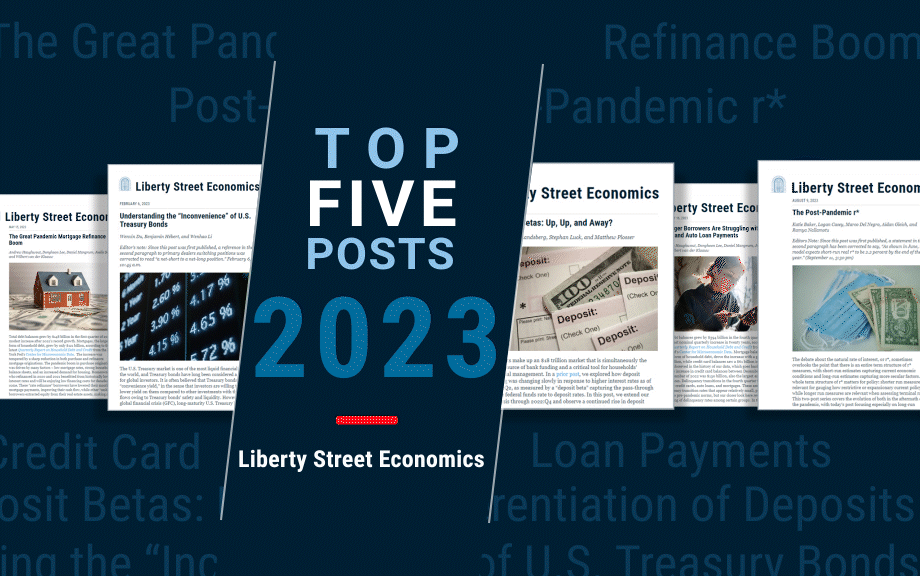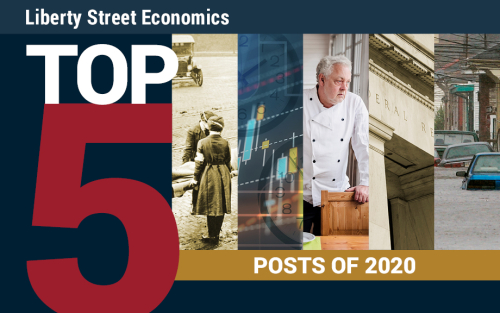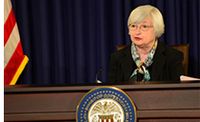Where Is R‑Star and the End of the Refi Boom: The Top 5 Posts of 2023

The topics covered on Liberty Street Economics in 2023 hit many themes, reflecting the range of research interests of the more than sixty staff economists at the New York Fed and their coauthors. We published 122 posts this year, exploring important subjects such as equitable growth and the economic impacts of extreme weather, alongside our deep and long-standing coverage of topics like inflation, banking system vulnerability, international economics, and monetary policy effects. As we close out the year, we’re taking a look back at the top five posts. See you again in 2024.
Understanding the Impact of COVID‑19: The Top Five LSE Posts of 2020

An annual tradition at Liberty Street Economics is to present our most-read posts of the year. Given the events of 2020, New York Fed economists and guest coauthors focused their analysis on the effects of the coronavirus pandemic, writing some seventy articles since March on the subject. Our leading posts, in terms of traffic, all touch on the theme in some way. Consider this space a hub for COVID-19 coverage for some time to come, and take a look back at the top five posts grabbing attention in 2020.
From the Vault: Factor This In
New York Fed economists Tobias Adrian, Richard Crump, and Emanuel Moench developed a new approach for calculating the Treasury term premium. Their ACM term premia estimates have since become “increasingly canonical” in economic analysis.
From the Vault: Funds, Flight, and Financial Stability
The money market industry is in the midst of significant change. With the implementation this month of new Securities and Exchange Commission rules designed to make money market funds (MMFs) more resilient to stress, institutional prime and tax-exempt funds must report more accurate prices reflecting the net asset value (NAV) of shares based on market prices for the funds’ asset holdings, rather than promising a fixed NAV of $1 per share. The rules also permit prime funds, which invest in a mixture of corporate debt, certificates of deposit, and repurchase agreements, to impose fees or set limits on investors who redeem shares when market conditions sharply deteriorate. (Funds investing in government securities, which are more stable, are not subject to the new rules.) These changes, driven by a run on MMFs at the height of the financial crisis, add to earlier risk-limiting rules on portfolio holdings.
From the Vault: Does Forward Guidance Work?
This post takes a look at research assessing the effectiveness of forward guidance in monetary policy communications.
From the Vault: The Path of Interest Rates
From the Vault: Supplementing a Monetary Policy Syllabus
Liberty Street Economics posts from New York Fed economists can serve as teaching tools for new monetary policy and lending tools that are “not found in any textbook.”
From the Vault: Gauging Treasury Market Liquidity
A review of recent work on Liberty Street Economics examining liquidity in the U.S. Treasury market











 RSS Feed
RSS Feed Follow Liberty Street Economics
Follow Liberty Street Economics